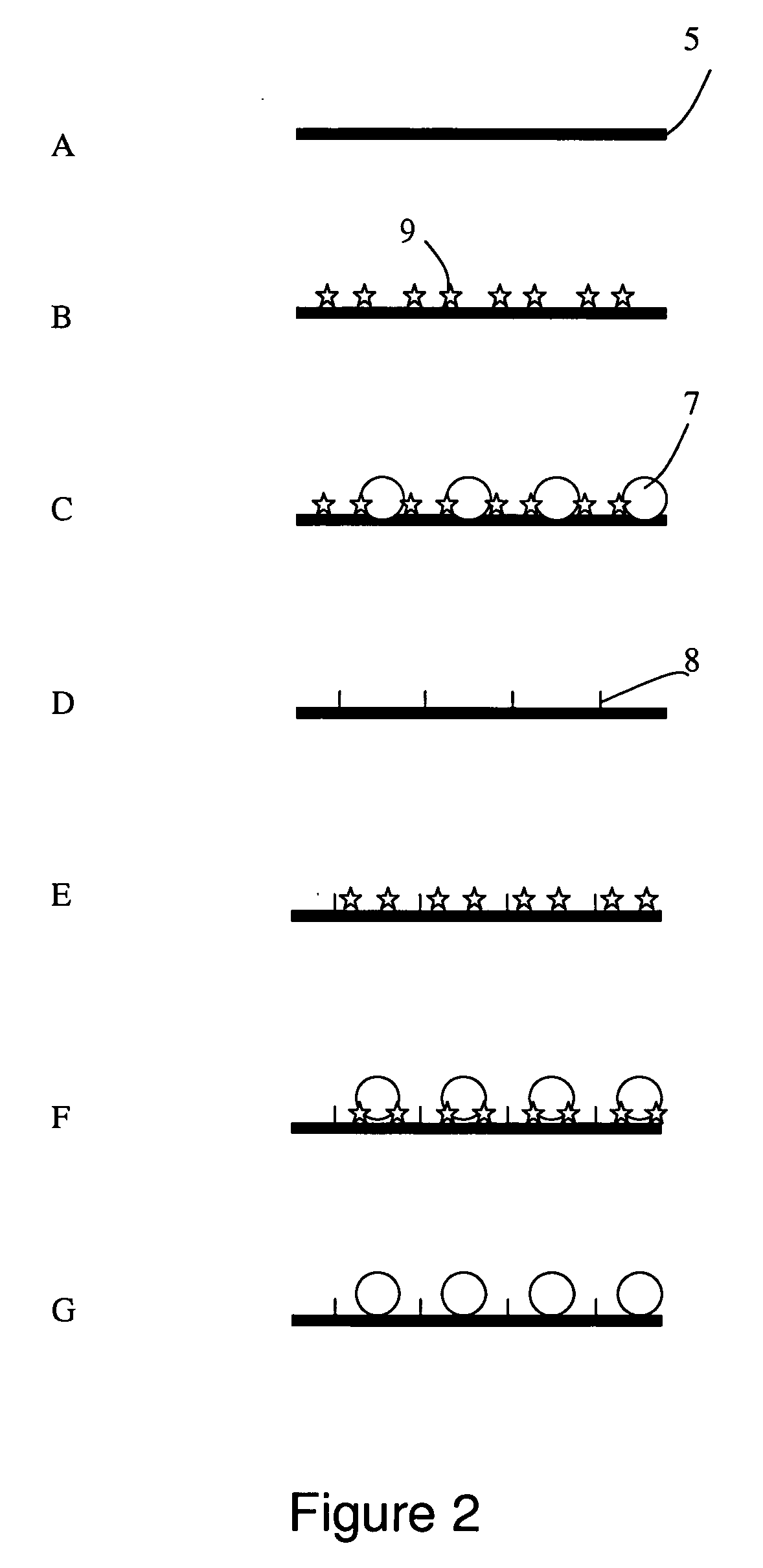Composite Modified Electrode Strip
a technology of electrode strips and modified electrodes, applied in the field of composite modified electrode strips, can solve the problems of poor stability under room temperature, inconvenient transportation and storage, and the inability to distinguish the electric signal measured from the background nois
- Summary
- Abstract
- Description
- Claims
- Application Information
AI Technical Summary
Benefits of technology
Problems solved by technology
Method used
Image
Examples
example 1
[0084]According to the method disclosed in Example 1 of U.S. Pat. No. 6,923,894 B2, a polymer resin carbon slurry comprising polyvinyl chloride and polyurethanes was screen printed on a PVC board substrate (1) to form an electrode system (2) consisting of a working electrode (2a) and a reference electrode (2b). The substrate was dried, and then an electrically insulating layer was deposited on the side of the substrate having the electrode system, and the working electrode (2a) and the reference electrode (2b) were partly exposed to form a conductive wire connecting end (4) and an electrochemical reaction end (5) on each electrode. The electrode strips obtained were dried and designated as Group A (FIG. 2A).
[0085]A small amount of 95% ethanol was added to a proper amount of a lipid-soluble electron mediator (1,1′-ferrocenedicarboxylic acid), and the mixture was sonicated until the lipid-soluble electron mediator was completely dissolved in the ethanol. The solution was dropped on so...
example 2
[0088]Glutaraldehyde (a bridging element (8)) was placed drop by drop on the electrochemical reaction end (5) of the electrode strip of Group A from Example 1. The unbound bridging element (8) was washed off with water, and the obtained electrode strips were designated as Group D (FIG. 2D).
[0089]The ethanol dissolved lipid-soluble electron mediator (1,1′-ferrocenedicarboxylic acid) prepared by the method described in Example 1 was placed drop by drop on the electrode strip of Group D to modify its electrochemical reaction end (5). After the unbound lipid-soluble electron mediators were washed off with water, the obtained electrode strips containing the lipid-soluble electron mediator layer (9) were designated as Group E (FIG. 2E).
[0090]According to the method described in Example 1, the nanometer colloid gold particle solution having a gold particle size of about 13 nanometers was placed drop by drop on the electrochemical reaction end (5) of the electrode strip of Group D to form a...
example 3
[0092]In this test, an antigen (11) in the biological sample was determined. The electrode strip modified by the nano-scaled gold particle layer (7) and the lipid-soluble electron mediator layer (9) was prepared on the basis of the materials and methods for the preparation of Group F described in Example 2. An anti-E. coli O157:H7 monoclonal antibody was used as the first antibody (10). An anti-E. coli O157:H7 polyclonal antibody was used as the second antibody (12) and linked to hydrogen peroxidase to form an anti-E. coli O157:H7 polyclonal-hydrogen peroxidase complex. The hydrogen peroxidase was immobilized on the electrode through the following steps (FIG. 5):[0093](a) binding the bridging element (8)-first antibody (10) complex to the surface of the electrode;[0094](b) washing off the unbound bridging element (8)-first antibody (10) complex;[0095](c) contacting the electrode with the antigen (11);[0096](d) contacting the electrode with the second antibody (12)-hydrogen peroxidas...
PUM
| Property | Measurement | Unit |
|---|---|---|
| size | aaaaa | aaaaa |
| size | aaaaa | aaaaa |
| size | aaaaa | aaaaa |
Abstract
Description
Claims
Application Information
 Login to View More
Login to View More - R&D
- Intellectual Property
- Life Sciences
- Materials
- Tech Scout
- Unparalleled Data Quality
- Higher Quality Content
- 60% Fewer Hallucinations
Browse by: Latest US Patents, China's latest patents, Technical Efficacy Thesaurus, Application Domain, Technology Topic, Popular Technical Reports.
© 2025 PatSnap. All rights reserved.Legal|Privacy policy|Modern Slavery Act Transparency Statement|Sitemap|About US| Contact US: help@patsnap.com



